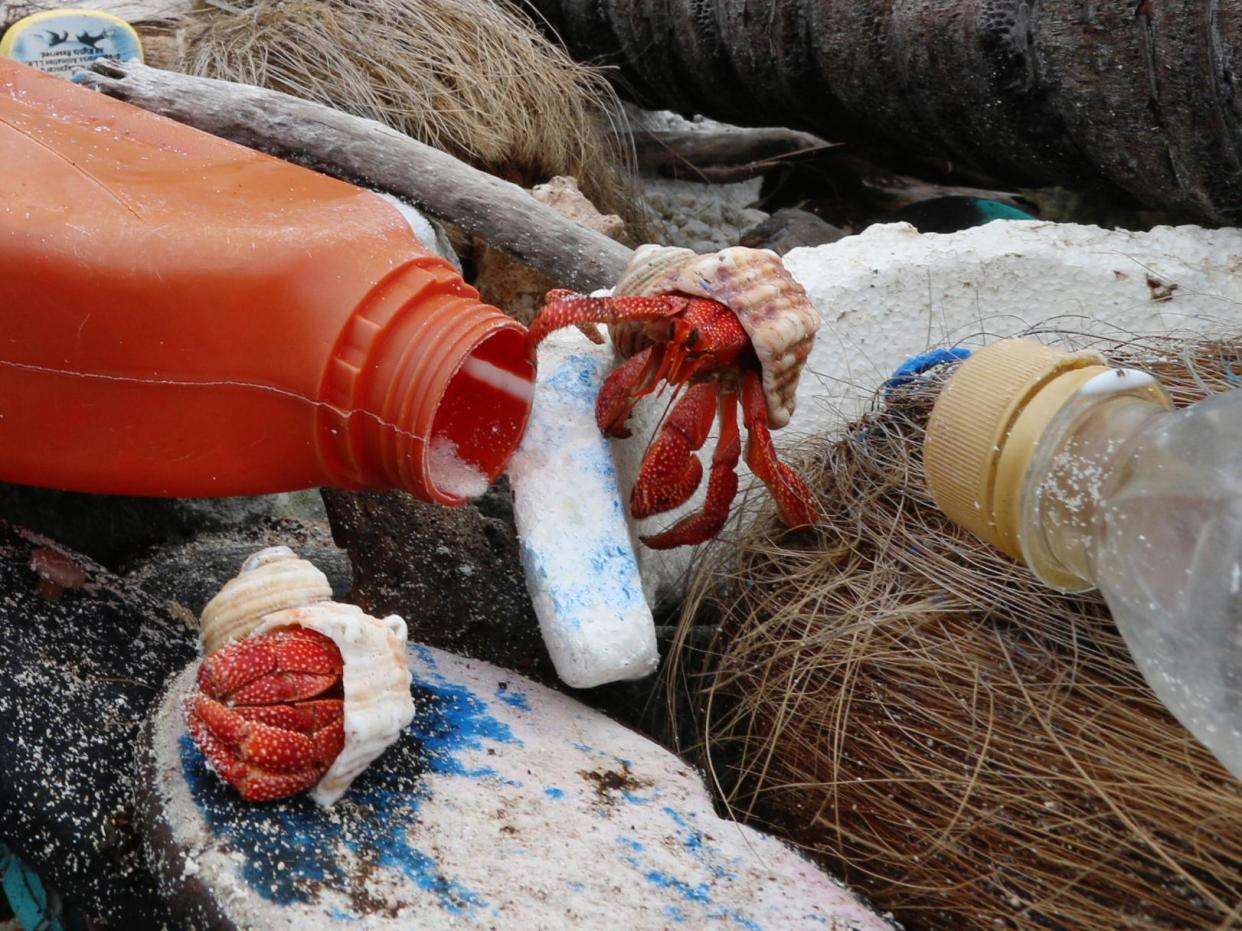More than half a million hermit crabs killed by plastic waste on remote islands

Plastic waste on the beaches of remote islands in the Indian and Pacific Oceans has trapped and killed about 570,000 hermit crabs, a study has found.
The discovery has prompted scientists to call for an urgent investigation into the global mortality rate of the crabs.
The study was carried out by researchers from the Institute for Marine and Antarctic Studies (Imas) at the University of Tasmania, the Natural History Museum, and the Two Hands Project, a community science organisation.
While surveying plastic waste on the Cocos Islands in the Indian Ocean and Henderson Island in the Pacific Ocean, researchers noticed that there was a large amount of open, plastic containers with hermit crabs inside, both dead and alive.
Dr Jennifer Lavers, of Imas, said: “We decided to do additional surveys across a range of sites of how many containers there were, including how many were open, how many were in a position likely to trap crabs, and how many contained trapped crabs.
“These results are shocking but perhaps not surprising, because beaches and the vegetation that fringes them are frequented by a wide range of wildlife,” she added.
The crabs were most likely to become trapped in plastic containers in which the opening was sloped upwards, preventing them from climbing out once they had fallen in.
The problem is made worse because hermit crabs, which do not have shells of their own and inhabit empty ones, emit a chemical signal when they die to let other crabs know that a shell has become available, said Dr Alex Bond, of the Natural History Museum.
“This attracts more crabs that then fall into the containers and die, which then sends out more signals that say there are more shells available,” he said.
“Essentially, it’s a gruesome chain reaction.”
Hermit crabs play a key part in maintaining the marine ecosystem. As scavengers, they clean up the beaches and forests of islands and aid in the turnover of nutrients, the aeration and fertilisation of soil, and the dispersing of seeds.
They are also an important part of the food chain, and a steep decline in their numbers would impact larger marine animals.
Remote islands such as the Cocos Islands and Henderson Island are effective indicators of the amount of plastic debris floating in the oceans.
In May, Lavers also led a study on the volume of plastic debris washed up on the Cocos Islands and found 414 million pieces of plastic, including 977,000 shoes and 372,000 toothbrushes.
According to The Guardian, the amount of debris buried up to 10cm beneath the sand was 26 times more than the amount visible on the surface, indicating that previous studies may have “drastically underestimated the scale of debris accumulation”.
Read more
Scientists teach piece of plastic how to walk
Jason Momoa shames Chris Pratt for using plastic water bottle
Shoppers could be charged 70p for plastic 'bag for life'
Supermarkets urged to offer free water to curb plastic waste
Residents promised ‘park view’ from new flats get plastic lake instead

 Yahoo News
Yahoo News 
